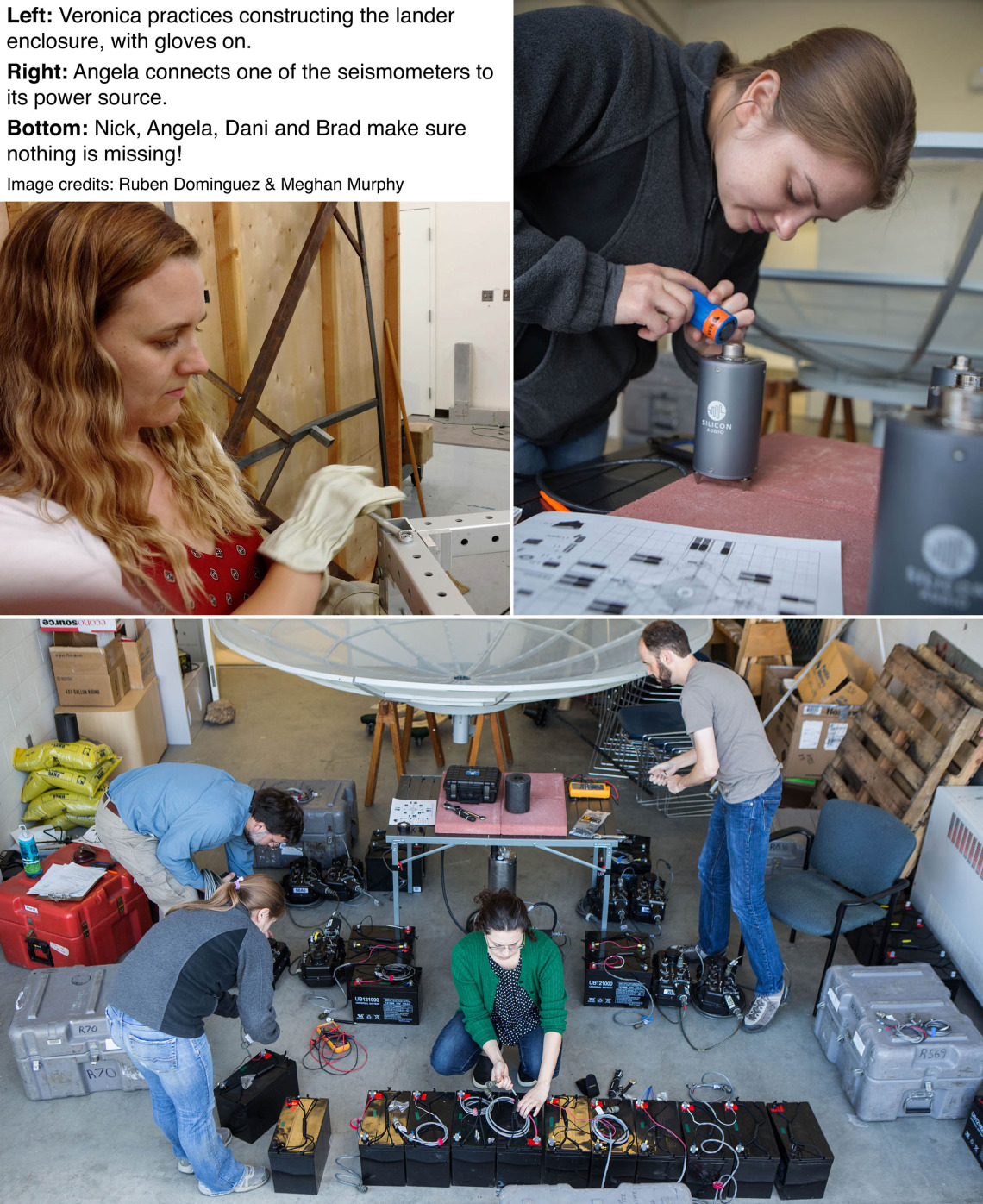Getting Ready: Practice! Practice! Practice!

Only 10 days to go now!!
After the Installation Team is helicoptered into the field site, we’ll be setting up our tents and the seismometer stations, some up to a kilometer away from the tents, in sub-zero temperatures and in gusts of wind up to 100 mph! I have trouble setting up a tent at the best of times, but trying to set up a wind-blown tent, with all of its fiddly little bits, while wearing big thick gloves and ski-goggles so you can’t see or feel anything properly!? No one is looking forward to that! So, we have been getting ready by practicing setting up our equipment in a more sheltered environment. We’ve already done this at our home institutions. The photos below show us at the University of Arizona and the University of Alaska. When we get to Greenland, we’ll also have a “huddle test” – one last run-through at Thule Airbase before going into the field.
We are taking 28 seismometers with us in total and will be leaving them out in the field from the beginning of May to the end of August, to collect data over the summer. That means that each seismometer needs a long-term power source and a backup power source. Summer in Greenland means ~ 24 hours sunlight per day (!), so the primary source of power for our seismometers are solar panels, backed up by batteries. Some of the seismometers will be part-buried in the ice to create good contact between the sensor and the ground (seismometers can get better data that way). Others will be placed above ground on our lander mock-up - essentially a glorified metal table that we have built to approximate a landed spacecraft. To help shield our above-ground seismometers from the wind we have created an ‘enclosure’. Although this is the largest piece of equipment that we will be setting up, it has many small nuts and bolts (the worst of all the “Fiddly Bits”). I’ve bet Dani $20 that she can’t put it together without dropping at least one bolt!

